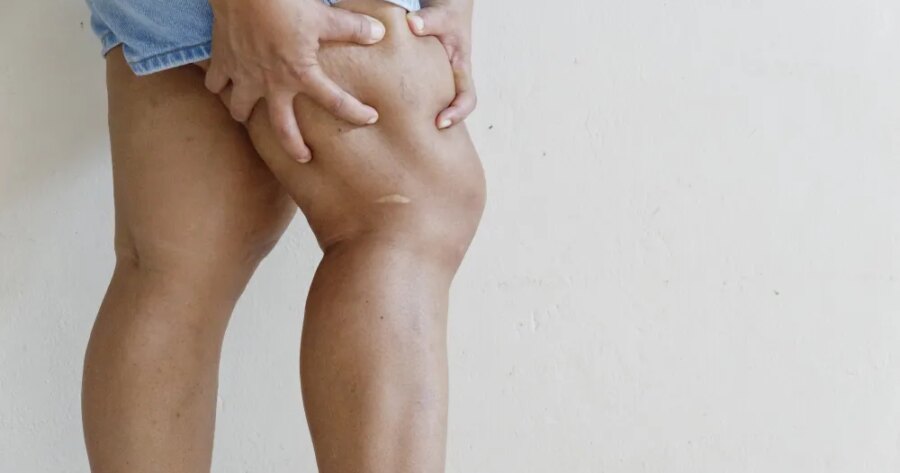Cellulite and stretch marks are common skin concerns that affect people of all ages, genders, and body types. While they’re completely normal and harmless, many individuals seek ways to reduce their appearance for aesthetic reasons. Thanks to advancements in dermatology and skincare, there are a variety of treatments and practices available to help minimize the visibility of these skin changes. In this article, we’ll explore potential causes and a range of options you might consider, from at-home remedies to professional interventions.
What Causes Cellulite and Stretch Marks?
The Science Behind Cellulite
Cellulite occurs when fat cells push through the connective tissue beneath your skin, creating a dimpled or lumpy appearance. Factors like genetics, hormones, and lifestyle can all play a role. While it’s more common in women due to differences in fat distribution, it can also affect men.
Understanding Stretch Marks
Stretch marks form when the skin stretches or shrinks rapidly, such as during pregnancy, puberty, or rapid weight fluctuations. This sudden change disrupts collagen and elastin, two proteins critical for skin elasticity, resulting in scars that appear as red, purple, or white streaks. Genetics, skin type, and hormonal changes may also contribute to their development.
Exploring At-Home Remedies
If you’re looking for gentle and cost-effective ways to address cellulite and stretch marks, at-home remedies might be a good starting point. These options may not eliminate the issue entirely but can help improve skin texture and appearance over time.
Moisturizing and Hydration
Keeping your skin hydrated is key to maintaining its elasticity. Products containing ingredients like shea butter, cocoa butter, or hyaluronic acid can help plump the skin, making marks less noticeable. While these won’t remove stretch marks or cellulite, they can promote healthier skin overall.
Exfoliation
Regular exfoliation might help reduce the visibility of stretch marks by removing dead skin cells and stimulating new skin growth. Coffee scrubs, sugar scrubs, or dry brushing may also temporarily smooth out the appearance of cellulite.
Retinol Creams
Retinol, a vitamin A derivative, is a common ingredient in skincare products targeting stretch marks. While results can vary, some studies suggest that retinol may help improve collagen production, leading to smoother, firmer skin over time.
Professional Treatments for Cellulite Reduction
Professional treatments offer more targeted approaches to managing cellulite. While no treatment guarantees complete removal, many options aim to reduce its appearance with varying levels of success.
Laser Therapy
Laser treatments, such as Cellulaze, use energy to break up the fibrous bands that cause dimpling in cellulite. These treatments may also stimulate collagen production, improving skin elasticity. Keep in mind that multiple sessions are often required, and outcomes can differ based on individual skin types.
Radiofrequency Therapy
Radiofrequency treatments like Thermage or Venus Legacy use heat to target cellulite. This non-invasive procedure can help tighten skin and reduce dimpling, though results may take several sessions to become noticeable.
Acoustic Wave Therapy
This treatment involves the use of sound waves to break up fat deposits under the skin. Though it’s considered relatively safe, outcomes vary and are generally more effective for mild cases of cellulite.
Advanced Solutions for Stretch Marks
For stretch marks, professional interventions often focus on promoting collagen and elastin production to improve the skin’s overall texture.
Microneedling
Microneedling involves tiny needles creating controlled micro-injuries in the skin. This process stimulates collagen and elastin production, potentially reducing the visibility of stretch marks over time. Microneedling is often combined with serums or PRP (platelet-rich plasma) for enhanced results.
Laser Resurfacing
Fractional lasers like Fraxel can target the pigmentation and texture of stretch marks, making them less noticeable. Laser treatments are particularly effective for newer stretch marks but may require multiple sessions for optimal results.
Chemical Peels
Chemical peels containing alpha-hydroxy acids (AHAs) or trichloroacetic acid (TCA) can help resurface the skin and reduce the appearance of stretch marks. These treatments remove the outer layer of skin, encouraging new growth and improving texture.
Lifestyle Habits That May Help
While treatments can play a significant role in addressing cellulite and stretch marks, adopting healthy lifestyle habits may support your efforts and contribute to overall skin health.
Regular Exercise
Strength training and cardiovascular exercise can improve muscle tone and reduce fat deposits, which may help minimize the appearance of cellulite over time. Stretch marks, however, may not respond as directly to exercise but maintaining a stable weight can prevent new ones from forming.
Balanced Nutrition
A diet rich in antioxidants, vitamins, and healthy fats can promote skin elasticity. Foods high in vitamin C, zinc, and omega-3 fatty acids may support collagen production, enhancing skin resilience.
Staying Hydrated
Adequate hydration helps maintain skin elasticity and overall health, potentially improving the texture of both cellulite and stretch marks.
Managing Expectations
It’s important to approach treatments for cellulite and stretch marks with realistic expectations. While advancements in skincare and dermatology offer promising solutions, individual results will vary. Factors like genetics, lifestyle, and the age of the marks or dimpling can all influence outcomes. A consultation with a dermatologist or licensed aesthetician can provide personalized guidance tailored to your specific skin concerns.
Reshape Your Future
Cellulite and stretch marks are a natural part of life, but if they bother you, there are numerous treatments and habits you can explore to reduce their appearance. From moisturizing creams and exfoliation to cutting-edge laser and microneedling treatments, options exist at every level to suit different needs and budgets.
Remember, consistency and patience are key, as most solutions take time to show results. Consult a professional to determine the best approach for your skin, and embrace the journey toward feeling more confident in your own skin.





